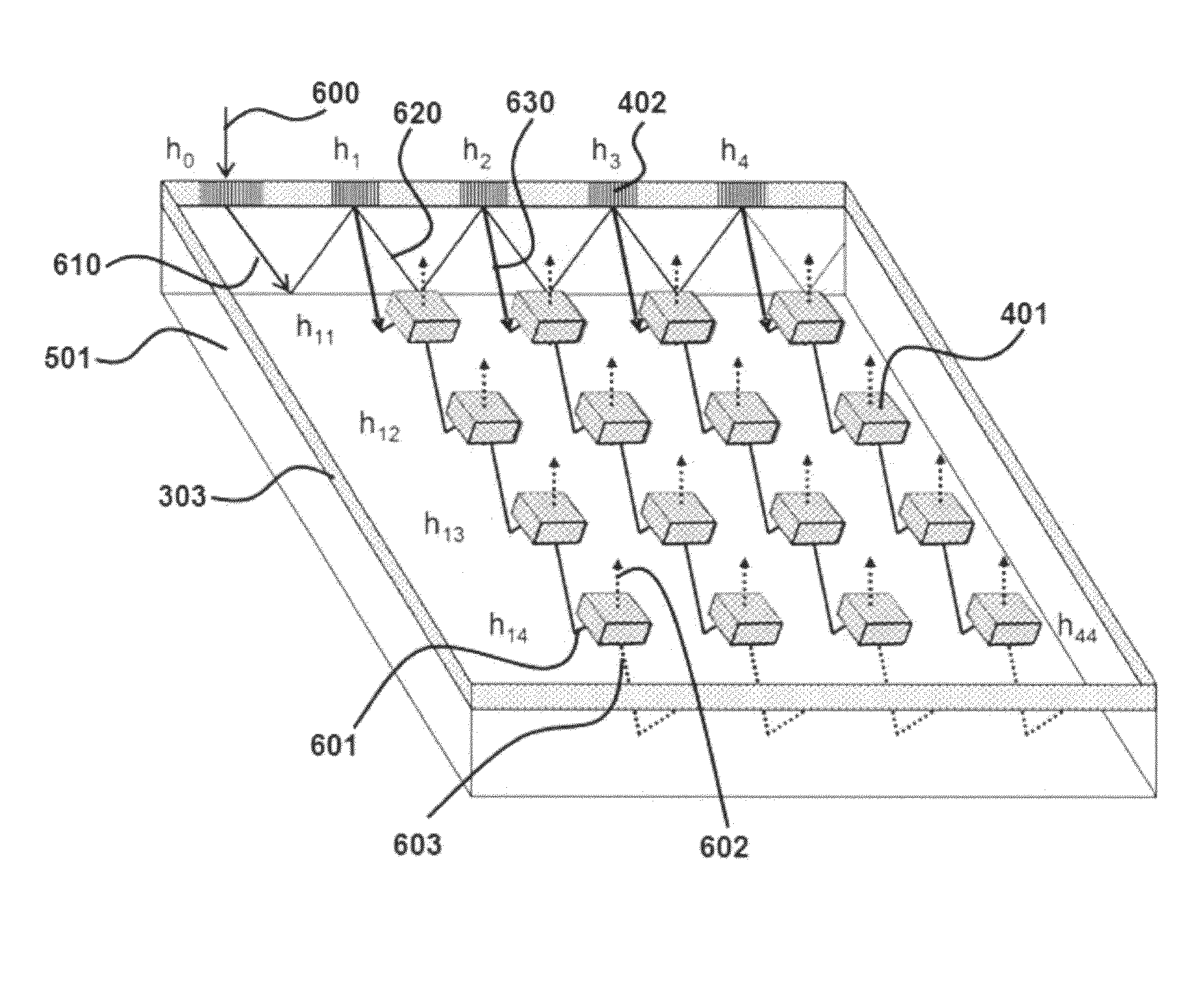Two-dimensional surface normal slow-light photonic crystal waveguide optical phased array
a phased array and photonic crystal waveguide technology, applied in the direction of optical elements, cladded optical fibres, instruments, etc., can solve the problems of unachievable large angles and speeds by any current method, and achieve the effect of fast, large angle dynamic steering of multiple optical beams, and simplifying the process of optical beam steering
- Summary
- Abstract
- Description
- Claims
- Application Information
AI Technical Summary
Benefits of technology
Problems solved by technology
Method used
Image
Examples
Embodiment Construction
Detailed Description of the Invention
[0032]In accordance with a preferred embodiment of the present invention, a device for optical beam steering comprises: a two-dimensional array of surface normal photonic crystal waveguides, an input light coupler comprising a substrate wave guided (SWG) holographic fanout array, a photonic crystal waveguide taper, and heating metal electrodes. Light from a tunable laser source is coupled into the SWG. The SWG creates a two dimensional fanout array with uniform intensities at the outputs, which are coupled into the two dimensional photonic crystal waveguide array. Metal heating electrodes in each pixel change the refractive index of the material, thereby changing the group index, due to the dependence of group index (which is also a function of wavelength) on temperature. Thus, a group index contrast is achieved via temperature tuning, which thereby produces a large phase shift in the optical beam. The temperature change of each pixel is controll...
PUM
 Login to View More
Login to View More Abstract
Description
Claims
Application Information
 Login to View More
Login to View More - R&D
- Intellectual Property
- Life Sciences
- Materials
- Tech Scout
- Unparalleled Data Quality
- Higher Quality Content
- 60% Fewer Hallucinations
Browse by: Latest US Patents, China's latest patents, Technical Efficacy Thesaurus, Application Domain, Technology Topic, Popular Technical Reports.
© 2025 PatSnap. All rights reserved.Legal|Privacy policy|Modern Slavery Act Transparency Statement|Sitemap|About US| Contact US: help@patsnap.com



